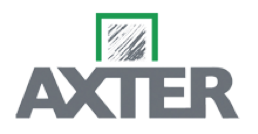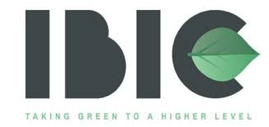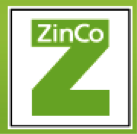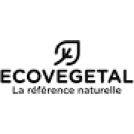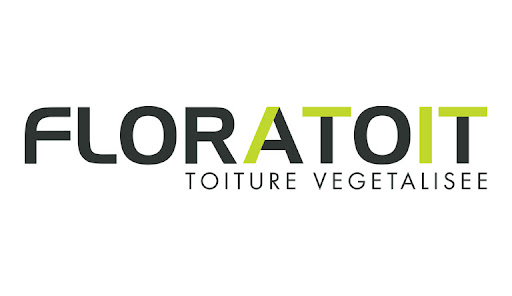Synthèse
The global green roofing market, valued at USD 1.1 billion, is enjoying robust growth. Projections indicate a surge in demand, with an expected growth rate of around 17% CAGR from 2020 to 2027. Governments around the world are facilitating this expansion through tax incentives and regulations encouraging the adoption of green roof systems. For example, New York's requirement to retrofit roofs with solar or eco-roofing systems should further stimulate market growth. Despite a low penetration rate, urbanization trends and the benefits of green roofs, such as heat reduction, water filtration and pollution control, point to a growing market.particularly in highly urbanized regions such as North America, and in cities with green roof policies such as Tokyo and Paris.
The Belgian market is particularly promising, especially in Brussels, where new buildings over 100 m² are required by law to have green roofs. With an urbanization rate of almost 98%, the demand for green roofs in Belgium could intensify as it offers opportunities for companies specializing in eco-construction, especially as concerns about energy efficiency and environmental impact gain ground.
The emerging potential of green roofs in Belgium
A fast-growing market The Belgian green roof market, while still in its infancy compared to its European counterparts, has great potential, particularly in terms of energy efficiency and environmental impact.the Belgian green roof market, while still in its infancy compared to its European counterparts, offers significant potential, particularly in urban areas where the high concentration of buildings encourages the adoption of environmentally-friendly roofing solutions. The technique has enjoyed a resurgence in popularity in countries such as France and Belgium, with adoption rates on the rise due to the notable benefits of green roofs in terms of sustainability and urban planning. One of the main trends in the Belgian market is the adaptation of these roofs to new buildings and renovations. The average maintenance cost of these roofs remains low, particularly for extensive roofs characterized by a thin layer of vegetation and substrate. The inherent advantages of green roofs make them not only environmentally beneficial, but also cost-effective in the long term.
Despite a currently low penetration rate, demand for green roofs is underpinned by their ability to mitigate heat, control water filtration and reduce pollution - a set of benefits particularly relevant in tropical regions. The Belgian market represents a growing segment of this global trend. Given Belgium's urban area relative to that of France, the volume of the green roof market in Belgium is estimated at around 14.3% of the volume of the French market. With a market that has yet to be fully mapped, Belgium could see its green roof segment grow in the coming years, supported by government initiatives and a robust urbanization rate in excess of 98%. Demand for green roofs is also supported by the number of building permits issued for residential and non-residential construction.
In 2020 alone, over 68,000 permits were granted, representing an increase. The smaller gap between new builds and renovations suggests an evolving market that favours the incorporation of green roof systems during the initial construction phases. In addition, the Flemish region, which accounts for the bulk of these permits, is showing pronounced economic vitality and could represent a significant opportunity for green roof companies. Another notable trend is the growing ecological awareness of city dwellers. Almost 99% of houses and over 95% of apartments are currently not in line with the targets set for 2050 under the European Green Pact and the Paris Agreement. With a significant segment of the building stock, the key players shaping the green roof landscape are As we delve deeper into the green roof market ecosystem, several notable companies emerge as key contributors to this environmentally conscious and growing sector.
Each player, with its distinct approaches and services, is shaping the market and contributing to its expansion.
- Groenbedrijf Van Vlierde: A Flemish green roof pioneer Based in Flanders, Groenbedrijf Van Vlierden deserves recognition for its pioneering role in popularizing green roofs in Belgium. With robust annual growth of 15-20% in its installation area, Van Vlierden has been laying impressive expanses of green roofs, ranging from 2,000 to 3,000 square meters per week. This success illustrates the growing demand and the company's leading role in the sector.
- Harmonie: the synthesis of green roofing and maintenance More than just installation, Harmonie offers its customers an essential service: green roof maintenance. Recognizing that maintenance is an essential factor in the longevity and effectiveness of green roofs, Harmonie's comprehensive offerings ensure that these ecological investments will continue to produce benefits for years to come.
- Green Plan: Adapting to the upside of the pandemic The 19-year-old avian flu pandemic has led to an unexpected surge in the green roofing market, as individuals look to improve their living spaces during closed periods. Green Plan director Glenn Hernans noted that these new needs have led to increased demand for green roofs from private individuals, indicating that the market has shifted from government-initiated to consumer-led projects.
- Belgian Federation of Green Roofs (BFG): Advocacy for green roofs Under the leadership of Yves Heirman, the Belgian Federation of Green Roofs (BFG) actively promotes the growth of the sector, which has been on an upward trajectory for several years. The BFG's advocacy efforts have been crucial in representing the industry's interests and promoting the adoption of green roofs. These players, whether service providers, advocacy groups or maintenance specialists, are not simply individual entities working in a niche market.
They are essential elements of a complex market structure that collectively pushes the boundaries of urban sustainability. Thanks to their innovation, dedication and responsiveness to global challenges and consumer behavior, these companies are positioning themselves at the forefront of a booming sector that promises to make our cities greener and our planet healthier.
à la compréhension de ce marché
Détail du contenu
 Informations
Informations
- Nombre de pages : 30 pages
- Format : Version digitale et PDF
- Dernière mise à jour : 05/10/2021
 Sommaire et extraits
Sommaire et extraits
1 Market overview
1.1 Presentation and definition of the market
The greening of a roof or Horizontal Planted Complex Wall (HPCW) can be defined as the installation of a set of materials and plants composing a microflora with a water drainage system The installation of green roofs must be compatible with the existing roof structure (slab...) and the existing materials (concrete, wood...). The technique was developed in architecture in the 1970s, mainly in Scandinavian countries, Germany, Switzerland and more recently in France and Belgium in the 1990s and 2000s.
The composition of the different layers of substrate, filtration and drainage that make up the green roofs are essential. A layer of special EPDM plastic sheeting (with anti-root felt if necessary) or non-metallic welded or glued waterproofing elements separate the supporting roof structure from the substrate and drainage layer of the green roof.
There are several types of PCVH (intensive, extensive, semi-extensive...) and several installation systems: pre-vegetated sedum mats, pre-vegetated nesting sedum boxes, automatic watering systems...
In general, the installation of green roofs is more suitable for new buildings, but the greening of existing roofs is possible. As far as the maintenance and upkeep costs of green roofs are very low, especially for extensive roofs (low layer thickness and permanent vegetation cover) Green roofs are said to be much more waterproof than traditional roofs, thus increasing the durability of the roof. But the installation of environmental roofs, if poorly planned or executed, can lead to overloading of the building structure and cause damage up to the collapse of the roof.
In spite of a rather low penetration rate today, green roofs produce interesting effects (heat reduction, water filtration, pollution control, etc.), particularly in tropical areas, and could experience a stronger growth in these regions (South America, South-East Asia, Equatorial Africa). Brazil, Malaysia, Indonesia, India and China could also drive the global growth of green roofs. In particular, the Asian region will be one of the most demanded regions for green roofs by 2026, especially to curb pollution and environmental problems in large cities.
Thus, the current limitation of green roofs is that to achieve a significant environmental impact they must have a much higher penetration rate than at present and cover large areas.
The Belgian market is still very underdeveloped compared to some of its European neighbours, but it is not lacking in potential, due to a high urban concentration on its territory and growing support from governmental and municipal entities.
 Liste des graphiques
Liste des graphiques
- Taille de marché des toitures végétalisées
- Evolution du taux d'urbanisation
- Evolution du nombre de permis de bâtir autorisés, en bâtiments résidentiels
- Evolution du nombre de permis de bâtir autorisés, en bâtiments non résidentiels
- Répartition des permis de bâtir résidentiels par région
Toutes nos études sont disponible en ligne et en PDF
Nous vous proposons de consulter un exemple de notre travail d'étude sur un autre marché !
Dernières actualités
Entreprises citées dans cette étude
Cette étude contient un panorama complet des entreprises du marché avec les derniers chiffres et actualités de chaque entreprise :
 Choisir cette étude c'est :
Choisir cette étude c'est :
Accéder à plus de 35 heures de travail
Nos études sont le résultat de plus de 35 heures de recherches et d'analyses. Utiliser nos études vous permet de consacrer plus de temps et de valeur ajoutée à vos projets.
Profiter de 6 années d'expérience et de plus de 1500 études sectorielles déjà produites
Notre expertise nous permet de produire des études complètes dans tous les secteurs, y compris des marchés de niche ou naissants.
Notre savoir-faire et notre méthodologie nous permet de produire des études avec un rapport qualité-prix unique
Accéder à plusieurs milliers d'articles et données payantes
Businesscoot a accès à l'ensemble de la presse économique payante ainsi qu'à des bases de données exclusives pour réaliser ses études de marché (+ 30 000 articles et sources privées).
Afin d'enrichir nos études, nos analystes utilisent également des indicateurs web (semrush, trends…) pour identifier les tendances sur un marché et les stratégies des entreprises. (Consulter nos sources payantes)
Un accompagnement garanti après votre achat
Une équipe dédiée au service après-vente, pour vous garantir un niveau de satisfaction élevé. (+33) 9 70 46 55 00
Un format digital pensé pour nos utilisateurs
Vous accédez à un PDF mais aussi à une version digitale pensée pour nos clients. Cette version vous permet d’accéder aux sources, aux données au format Excel et aux graphiques. Le contenu de l'étude peut ainsi être facilement récupéré et adapté pour vos supports.
 Nos offres :
Nos offres :
the green roof market | Belgium
- Quels sont les chiffres sur la taille et la croissance du marché ?
- Quels leviers tirent la croissance du marché et leur évolution ?
- Quel est le positionnement des entreprises sur la chaine de valeur ?
- Comment se différencient les entreprises du marché ?
- Données issues de plusieurs dizaines de bases de données





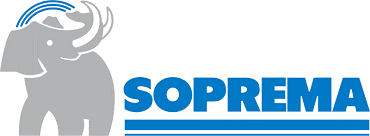 Près de Mulhouse, Soprema investit 50 millions d’euros dans une usine de panneaux isolants - 01/03/2024
Près de Mulhouse, Soprema investit 50 millions d’euros dans une usine de panneaux isolants - 01/03/2024

